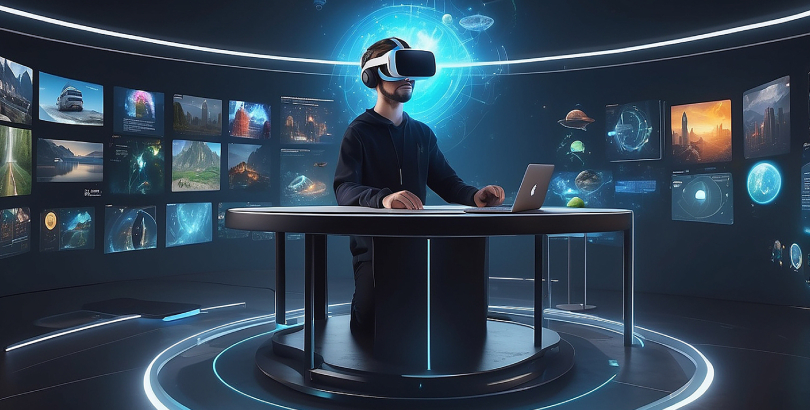Audiovisual technology impacted and transformed education in fundamental ways:
Video conferencing solutions: Through audiovisual technology, the following advantages shaped and transformed education:
– Scalability: due to AV infrastructure institutions, teachers could scale up their audiences and participation rate, including the virtually unlimited course enrollment quantities available via the Internet and in E-learning platforms.
– Quality: Audiovisual technology improves education quality by enhancing course content, audio, and video and providing viable and valuable alternatives for course participants and instructors. Audio and video conferencing, for example, enables multiple instructors and teaching assistants to collaborate on queries placed forth by course participants.
– Audiovisual technology is now a core component of institutions and educational spaces: audiovisual technology is now a core component of institutions & educational spaces.
– Economies of scale: Audiovisual technology provides economies of scale for education through cost reductions, significantly increasing course enrollment via hybrid and E-learning, cost-effective models of content distribution, and centralisation. It also enabled increases in the practical, theoretical limit of the number, of course, participants for any course requiring enrollment,
– Fundamentally altering service and logistics models in education: Audiovisual technology impacts education profoundly. The utilisation of the technology enables various mechanisms that affect institutions, learners, content creation, and the design and utilisation of spaces in the ecosystem. Poly video conference system: Content designers and instructors utilise multimedia, dynamic presentations, and
– Improvements in the quality of lecturing and reception by individuals enrolled in courses. Audiovisual technology enables devices such as microphones, speakers, and solutions that provide higher-quality audio instruction to reach the individuals enrolled in a course. This increases teaching quality and retention among students. Furthermore, it is not just limited to the audible spectrum; students and course participants also benefit from using digital whiteboard projectors that magnify and enlarge course content. Audiovisual technology thus provides various effective solutions for an instructor, enabling scalability, improving their instruction and enabling those enrolled in a course to receive a higher quality of teaching due to improving their experience and eliminating lack of reception between teachers and those enrolled in the course.
– Increasing inclusivity within education: Using AV technology and solutions increased inclusivity. Through the adequate provision of tools such as captioning, screen readers, and technology solutions/software associated with accessibility features, AV technologies aided inclusivity in education. Indoor LEDs are utilised in canteen libraries.
– Audiovisual technology-enabled and cultivated interests in subjects: Via utilisation of audiovisual technology, cultivation of relevant interests in subjects was initiated and developed, thus resulting in various young learners being guided towards study for subjects such as biology.
– Audiovisual technology increased safety: Audiovisual technology increased safety as a medium of instruction, communication, guidance, demonstration, and graphical display, all of which are adequate substitutes or guidance mechanisms that reduce requirements of physical contact, transportation of hazardous materials or objects, crowding, and prevent disputes.
– Audiovisual technology improved training and research: Using audiovisual technology improved training & research—remote training, enabling digital displays and visualisation for data.
– Enhancing and delivering effective solutions for exhibitions and educational events: Audiovisual technology allows for creative and utilised exhibition possibilities through conferences and lighting arrangements.
Conferencing unit: Audiovisual technology is currently employed at a very high level within most primary and higher educational institutions. Utilising audiovisual technology within education falls under its explicit interaction with E-learning technologies and education itself.
A few of the uses of audiovisual technology in education:
– Digital signal processors are utilised in edutainment events.
– Projectors are utilised for classroom instruction and content delivery.
– Specialized lecture podiums utilise microphone speakers and loudspeaker systems and are used for instructions in lecture halls.
– Teacher tracking cameras track teachers and enable the recording of lectures.
– Possibility of hybrid teaching: with the advent and utilisation of audiovisual technology, hybrid teaching is possible wherein the respective curriculum is taught online and in the classroom via physical attendance.- Audiovisual technology is utilised in various other departments that support educational institutes, canteens, transportation, libraries, and display spaces.





